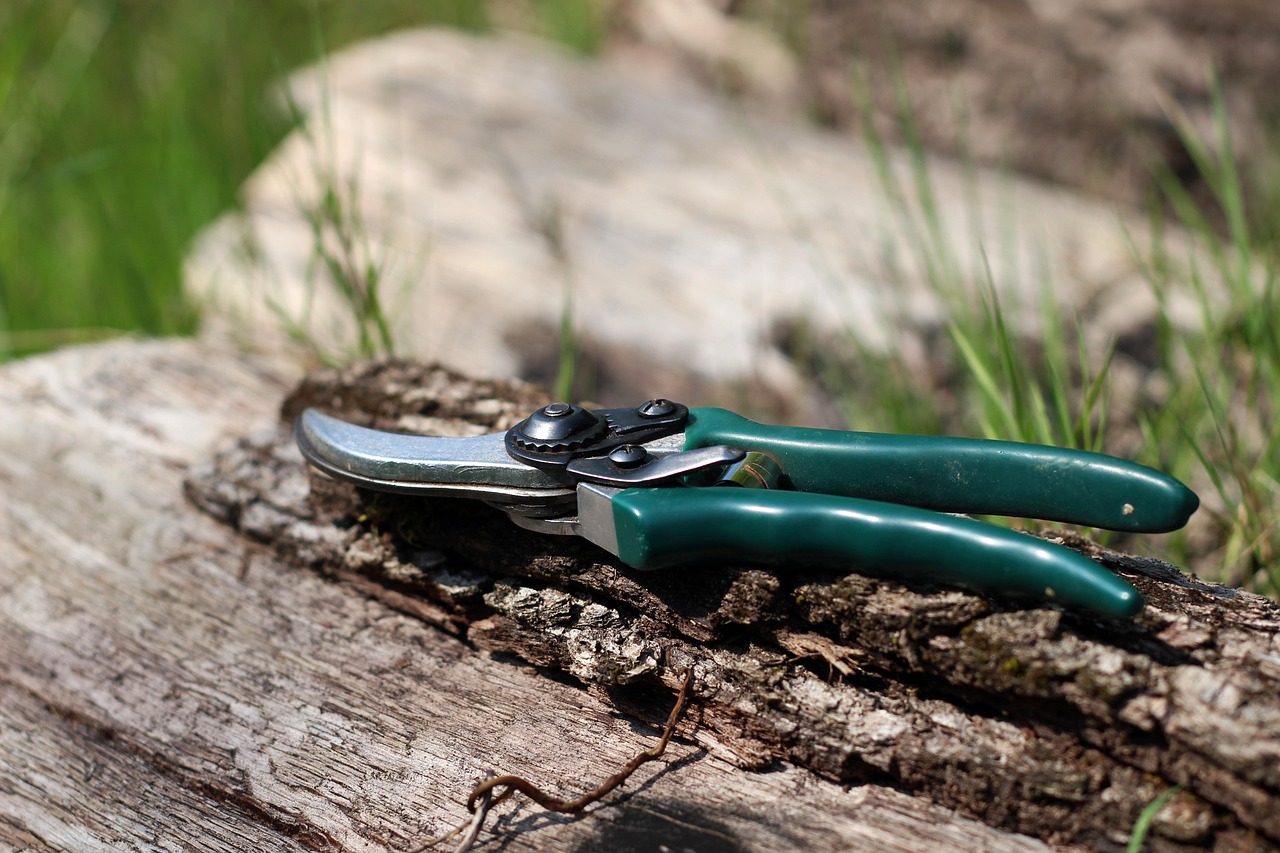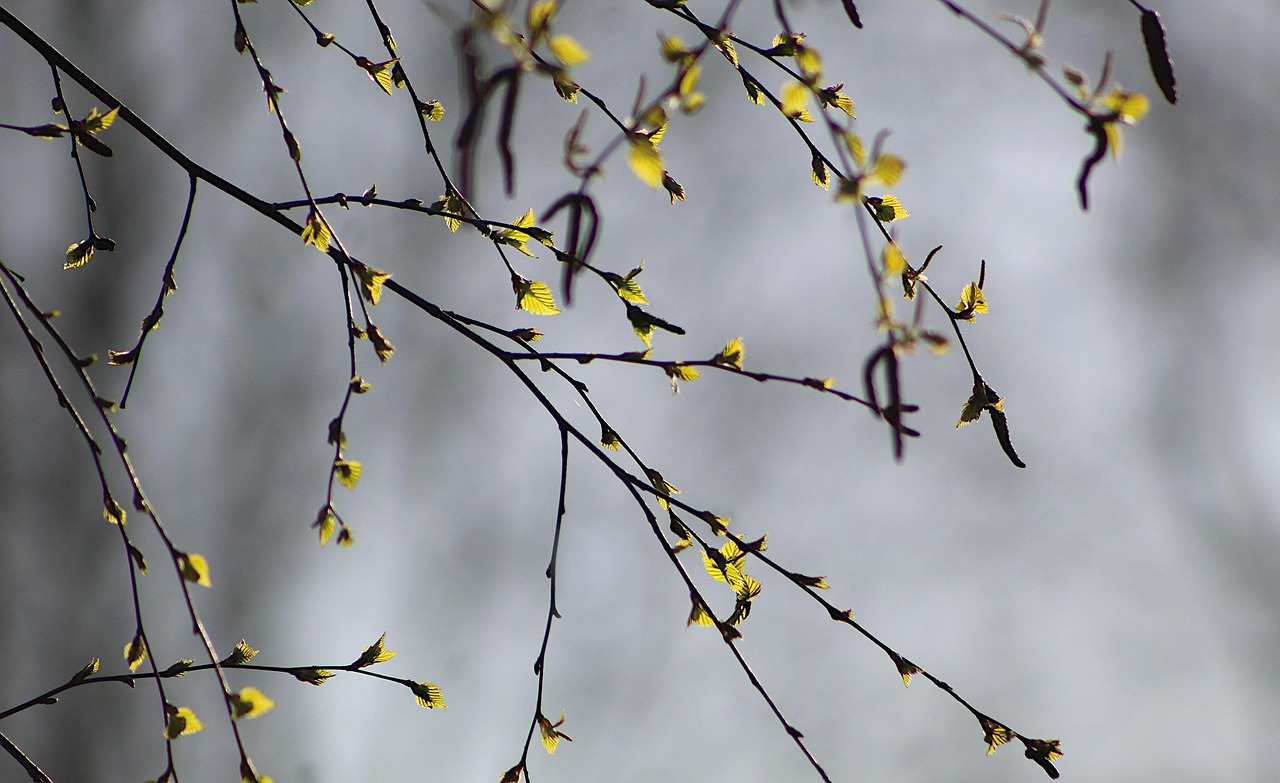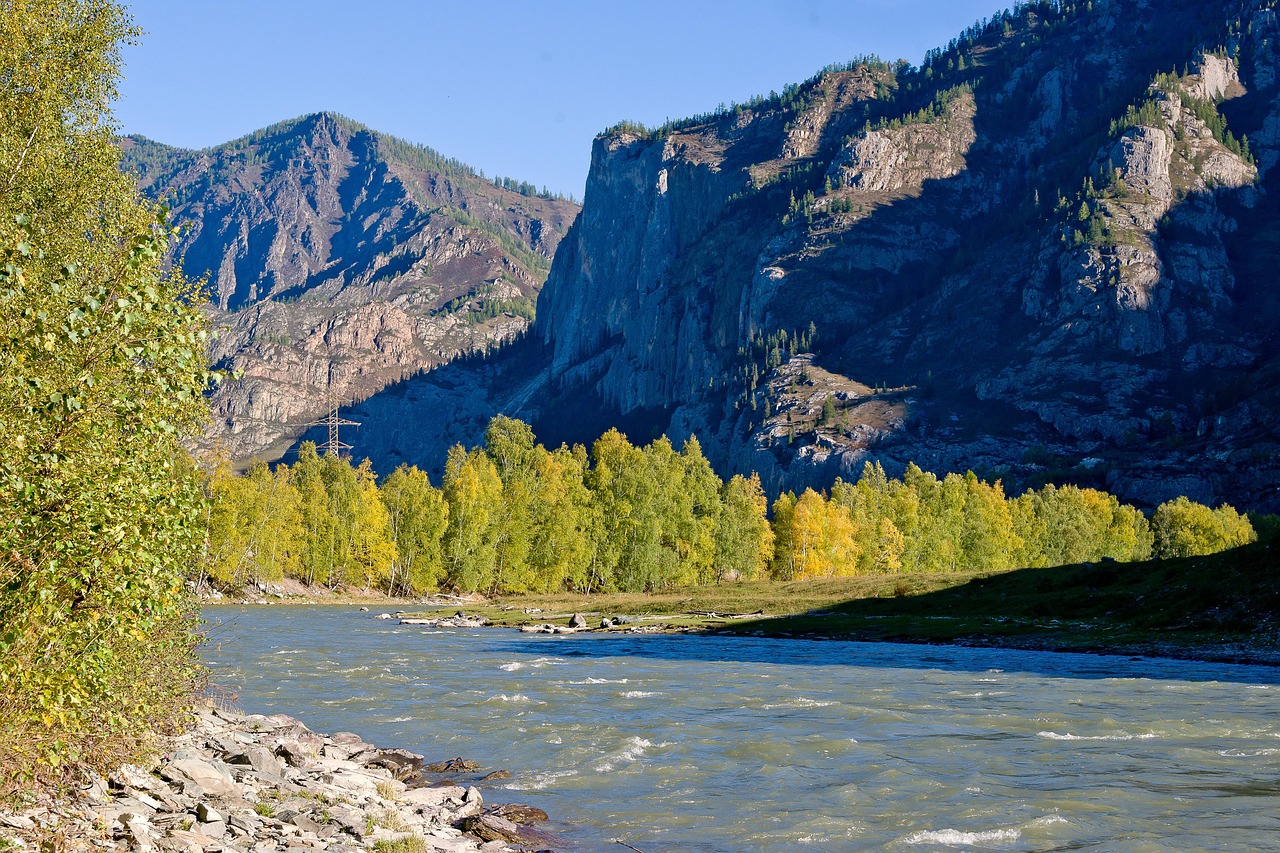Pruning River Birch trees is essential for maintaining their health and enhancing their decorative appeal in yards. Regular pruning promotes airflow, encourages growth, and shapes the tree to fit your landscape design, ensuring a beautiful and thriving addition to your garden.
The River Birch (Betula nigra) is a popular tree choice for many homeowners due to its attractive appearance and adaptability. Known for its distinctive, peeling bark and graceful branches, it adds a unique touch to any landscape. This tree thrives in various soil types and can withstand wet conditions, making it ideal for areas with poor drainage.

Pruning River Birch trees is not only about aesthetics. Proper pruning practices can significantly impact the tree’s overall health and longevity. Regular maintenance helps to prevent disease, allows light to penetrate the canopy, and encourages a bushier growth habit. Understanding the right techniques and timing for pruning is crucial to achieving the best results.
Benefits of Pruning River Birch Trees
Pruning River Birch trees offers several advantages that contribute to their beauty and health:
- Improved Air Circulation: Removing excess branches helps air circulate through the canopy, reducing moisture buildup that can lead to fungal diseases.
- Enhanced Growth: Pruning encourages new growth by directing the tree’s energy toward healthier branches.
- Better Shape: Regular shaping creates a more visually appealing structure, fitting seamlessly into your landscape design.
- Increased Sunlight Exposure: Thinning out dense areas allows sunlight to reach lower branches and promotes even growth throughout the tree.
- Removal of Dead or Diseased Wood: Cutting away unhealthy branches helps prevent the spread of diseases, ensuring your tree remains vibrant.
Before embarking on a pruning project, it’s essential to understand the growth patterns of River Birch trees. These trees typically grow rapidly, reaching heights of 40 to 70 feet. They also have a spread of 40 to 60 feet, making them quite substantial in size. The tree’s natural form is multi-stemmed, which can influence your pruning strategy.

| Characteristic | Details |
|---|---|
| Height | 40 to 70 feet |
| Spread | 40 to 60 feet |
| Growth Rate | Fast |
| Preferred Soil Type | Moist, well-drained soils |
| Sunlight Requirement | Full sun to partial shade |
Understanding these characteristics will help you determine the best approach for pruning your River Birch trees. Timing is also critical when it comes to pruning. The best time to prune is during late winter or early spring before new growth starts. This timing allows you to see the structure of the tree clearly and minimizes stress on the plant.
Essential Pruning Techniques
When pruning River Birch trees, there are several techniques that you can employ to achieve optimal results:
- Thinning: This technique involves selectively removing branches throughout the tree’s canopy. It helps improve airflow and light penetration.
- Crown Reduction: If the tree becomes too large or unwieldy, reducing the height or spread can help maintain its shape. Cut back the branches to a side branch that is at least one-third the diameter of the branch being cut.
- Deadwooding: This practice focuses on removing dead or damaged branches. This not only enhances appearance but also reduces potential hazards.
- Suckering: River Birch trees often produce suckers or sprouts at their base. Regularly removing these can help maintain a clean look.
Using sharp, clean tools is essential when pruning. This ensures smooth cuts that heal quickly, reducing the risk of disease. Additionally, always make cuts at a slight angle to promote drainage and discourage rot.

As you prepare to prune your River Birch trees, consider your overall landscaping goals. Think about how you want your trees to fit within your yard design. Whether you aim for a natural look or a more manicured appearance, understanding these aspects will guide your pruning strategy effectively.
In summary, effective River Birch pruning combines knowledge of tree biology with practical techniques. By following best practices and maintaining a regular schedule, you can ensure that your River Birch trees remain healthy and visually appealing throughout their lifespan.
When to Prune River Birch Trees
Timing is crucial when it comes to pruning River Birch trees. Pruning at the right time can enhance growth and health. The best period for pruning is during late winter to early spring, just before new growth begins. This timing allows the tree to heal quickly and minimizes stress.

Here are some key reasons why this timeframe is ideal:
- Reduced Stress: Pruning during dormancy reduces the stress on the tree, allowing it to focus energy on recovery once the growing season starts.
- Clear Visibility: Without leaves, it is easier to see the tree’s structure and make informed cuts.
- Encouragement of New Growth: Early spring pruning stimulates the growth of new leaves and branches, enhancing the tree’s appearance.
Avoid pruning in the fall, as this can encourage new growth that may not have time to harden off before winter. Similarly, late summer pruning is discouraged because it can expose the tree to diseases and pests during its vulnerable growing phase.
Tools Needed for Pruning
Having the right tools makes a significant difference in the quality of your pruning. Here are the essential tools you should consider using:
- Bypass Pruners: Ideal for cutting small branches (up to ¾ inch in diameter) cleanly.
- Loppers: Suitable for thicker branches (up to 2 inches in diameter). They provide more leverage than pruners.
- Saws: A pruning saw or a hand saw works well for larger branches (over 2 inches). Choose a saw with fine teeth for smooth cuts.
- Hand Gloves: Protect your hands from sharp branches and thorns.
- Safety Goggles: Safeguard your eyes from debris while cutting.
Before starting the pruning process, ensure that all tools are clean and sharp. Cleaning tools with rubbing alcohol or a bleach solution can help prevent the spread of diseases between plants.
Pruning Techniques Explained
Understanding specific pruning techniques is essential for effective River Birch maintenance. Here are some common methods in more detail:
Thinning Cuts
This technique focuses on removing entire branches back to their point of origin. Thinning cuts improve airflow and light penetration, which is beneficial for overall health.
Heading Cuts
Heading cuts involve cutting back a branch to a bud or smaller branch. This technique encourages bushier growth. It’s particularly useful when shaping trees or controlling their size.
Reduction Cuts
If a branch is too long or out of place, reduction cuts can shorten it. Always cut back to a lateral branch that is at least one-third the diameter of the branch being removed. This helps maintain the tree’s natural shape while reducing height or width.
Cleaning Up
After pruning, it’s essential to clean up any debris. This not only enhances the appearance of your yard but also minimizes the risk of pests and diseases. Rake up fallen leaves and branches and dispose of them properly.
Common Mistakes to Avoid
Even seasoned gardeners can make mistakes when pruning River Birch trees. Here are some common pitfalls to be aware of:
- Over-pruning: Removing too many branches can shock the tree and reduce its vitality.
- Poor Cuts: Making jagged or improper cuts can lead to disease. Always use sharp tools for clean cuts.
- Ignoring Tree Health: Pruning should not be done if the tree is diseased or stressed. Address health issues first before considering pruning.
- Neglecting Safety: Always prioritize safety by wearing protective gear and using tools correctly.
Understanding River Birch Growth Patterns
River Birch trees exhibit unique growth patterns that influence how they should be pruned. Their natural tendency is to grow multiple trunks and a broad canopy. This multi-stemmed characteristic means that careful planning is essential when pruning.
Their growth habit often results in dense foliage, which can lead to issues like poor airflow and increased disease susceptibility. Keeping this in mind will guide you in making informed decisions about thinning and shaping your River Birch trees.
The Role of Fertilization Post-Pruning
After pruning, it’s beneficial to assess the tree’s nutrient needs. Fertilization can support recovery and stimulate healthy growth. Here are some tips on fertilizing River Birch after pruning:
- Use a Balanced Fertilizer: A slow-release fertilizer high in nitrogen promotes healthy leaf development.
- Timing: Apply fertilizer in early spring, just as new growth begins, to give your tree an early boost.
- Avoid Over-Fertilization: Too much fertilizer can cause excessive growth, making the tree more susceptible to wind damage.
Caring for your River Birch trees with proper pruning techniques and post-pruning fertilization will ensure they remain a stunning focal point in your decorative yard.
Pest and Disease Management for River Birch Trees
Maintaining the health of your River Birch trees goes beyond proper pruning and fertilization. Awareness of potential pests and diseases is essential for preserving their beauty and vitality. Here are some common issues that may affect River Birch trees and how to manage them effectively.
Common Pests
River Birch trees can be susceptible to various pests. Here are some of the most common ones:
- Birch Leafminer: This pest causes leaves to appear mottled or discolored. The larvae tunnel between the leaf surfaces.
- Bronze Birch Borer: A serious threat, this insect bores into the trunk, causing dieback in branches. Look for signs of frass (wood dust) near entry holes.
- Aphids: These small insects suck sap from leaves and can lead to stunted growth and curling leaves.
To control these pests, consider the following management strategies:
- Regular Inspections: Check your trees periodically for signs of infestation.
- Natural Predators: Encourage beneficial insects such as ladybugs and lacewings that feed on aphids and other pests.
- Insecticidal Soap: For small infestations, applying insecticidal soap can help control pests without harming beneficial insects.
- Professional Treatment: If an infestation is severe, consult a local arborist for appropriate treatment options.
Common Diseases
In addition to pests, River Birch trees can suffer from several diseases. Familiarizing yourself with these conditions will help you take preventative measures:
- Leaf Spot: This fungal disease causes dark spots on leaves, leading to premature leaf drop. Good air circulation can help prevent this issue.
- Root Rot: Caused by overwatering or poorly drained soil, root rot leads to wilting and yellowing of leaves. Ensure proper drainage around the tree’s root zone.
- Anthracnose: This fungal disease appears as dark, irregular spots on leaves and stems. Prune any affected areas promptly to prevent spread.
To manage diseases, implement the following strategies:
- Maintain Proper Watering: Avoid overwatering and ensure the soil drains well to prevent root rot.
- Prune Regularly: Remove any dead or diseased branches to improve airflow and reduce disease risk.
- Fungicide Treatments: In cases of severe infections, applying a fungicide may be necessary. Consult a professional for recommendations.
The Importance of Mulching
Mulching around your River Birch trees offers numerous benefits. A good layer of mulch can improve soil quality, conserve moisture, and suppress weeds. Here’s how to apply mulch effectively:
- Select the Right Material: Organic mulches like shredded bark, wood chips, or pine needles are excellent choices as they decompose and enrich the soil over time.
- Depth of Mulch: Apply a 2- to 4-inch layer of mulch around the base of the tree, extending it out to the drip line. Avoid piling mulch directly against the trunk to prevent rot.
- Regular Maintenance: Check mulch levels annually and replenish as needed, ensuring it remains at an appropriate depth.
Watering Practices for Healthy Growth
A proper watering routine is vital for the health of your River Birch trees, especially during dry spells. Here are some effective watering practices:
- Deep Watering: Water deeply but infrequently to encourage deep root growth. Aim for 1 to 2 inches of water per week during dry periods.
- Avoid Overhead Watering: Instead of sprinklers, use soaker hoses or drip irrigation systems to deliver water directly to the roots.
- Monitor Soil Moisture: Check soil moisture regularly by sticking your finger into the ground near the root zone. Water only when the top inch feels dry.
In addition to regular watering, consider mulching as mentioned earlier to retain soil moisture and provide nutrients as it decomposes.
Creating a Decorative Landscape with River Birch Trees
Incorporating River Birch trees into your landscape design can enhance its visual appeal significantly. Their unique bark and graceful branches offer aesthetic value year-round. Here are some tips on how to design your yard with River Birch trees:
- Grouping Trees: Planting multiple River Birch trees together can create a stunning cluster effect. This not only looks beautiful but also offers a natural habitat for wildlife.
- Add Understory Plants: Consider planting shade-loving plants or groundcovers beneath your River Birch trees. Hostas, ferns, and wildflowers thrive in the dappled sunlight created by these trees.
- Create a Natural Border: Use River Birch trees as a natural border or screen to provide privacy while adding beauty to your yard.
The versatility of River Birch trees allows them to fit into various landscape designs, from formal gardens to naturalistic settings. With proper care and creative planning, you can create a stunning outdoor space that highlights these beautiful trees.
Enhancing Your Landscape with Companion Plants
In addition to the beauty of River Birch trees, incorporating companion plants can further enhance your landscape. Choosing the right plants to grow alongside your River Birch not only complements their appearance but also supports ecosystem health. Here are some suggestions for companion plants:
- Astilbe: This perennial produces feathery flower spikes and thrives in the partial shade provided by River Birch trees. Its colorful blooms add variety to your garden.
- Japanese Forest Grass: A graceful grass that tolerates shade well, it creates a lush ground cover beneath the tree.
- Coral Bells: With various leaf colors and delicate flowers, Coral Bells can bring vibrant hues to the area around your River Birch.
- Bluebells: These charming spring flowers can thrive in the dappled sunlight, providing a beautiful carpet of blooms in the early season.
When selecting companion plants, consider their water and soil requirements. Many of these plants prefer moist conditions, similar to those favored by River Birch trees. This compatibility can result in a thriving garden area that is visually appealing and ecologically sound.
Seasonal Care for River Birch Trees
Caring for your River Birch trees throughout the seasons ensures they remain healthy and attractive. Seasonal care practices include:
Spring Care
As spring arrives, focus on:
- Inspecting for Damage: Check for any winter damage on branches and remove any dead wood.
- Fertilizing: Apply a slow-release fertilizer to promote new growth.
- Mulching: Refresh mulch around the base to retain moisture and suppress weeds.
Summer Care
During the summer months, ensure your tree has ample water. Monitor for pests and diseases, as warmer weather often encourages their activity. Regularly check for any signs of stress or damage.
Fall Care
In the fall, prepare your River Birch for winter by:
- Cleaning Up Leaves: Rake fallen leaves to prevent disease buildup.
- Watering: Ensure adequate moisture before the ground freezes.
- Pruning: Late fall is a good time for light pruning if necessary.
Winter Care
In winter, inspect your trees periodically, especially after snow or ice storms. Remove any branches that may be weighed down or damaged. Protecting your trees from heavy snow accumulation will help maintain their shape.
The Environmental Benefits of River Birch Trees
Beyond their aesthetic appeal, River Birch trees provide considerable environmental benefits. Some of these benefits include:
- Erosion Control: The extensive root system helps stabilize soil, preventing erosion along riverbanks and slopes.
- Wildlife Habitat: River Birch trees attract various birds and insects, contributing to a diverse ecosystem.
- Air Quality Improvement: Like all trees, River Birch absorbs carbon dioxide and releases oxygen, improving air quality.
- Shade Provision: These trees provide valuable shade, reducing temperatures in surrounding areas and lowering energy costs in nearby homes.
The ecological role of River Birch trees makes them an essential addition to gardens and landscapes, supporting both local wildlife and environmental sustainability.
Final Thoughts
Caring for and pruning River Birch trees is a rewarding endeavor that enhances both the beauty of your yard and the overall health of your landscape. By understanding proper pruning techniques, timing, pest management, and seasonal care, you can foster vibrant and resilient trees that thrive in your environment.
Integrating these trees with thoughtful landscaping will elevate your outdoor space. Companion planting, seasonal maintenance, and awareness of environmental benefits will help you create a beautiful and sustainable garden. With attention to detail and commitment to care, your River Birch trees can flourish for generations, offering aesthetic enjoyment and ecological advantages alike.
As you plan your landscape, remember that every aspect contributes to the overall harmony of your garden. Embrace the beauty of River Birch trees as integral components of a flourishing ecosystem that benefits both nature and your home.
